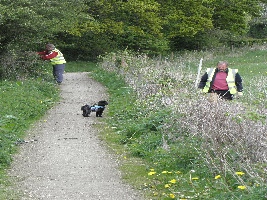
FOBHS@ 2019


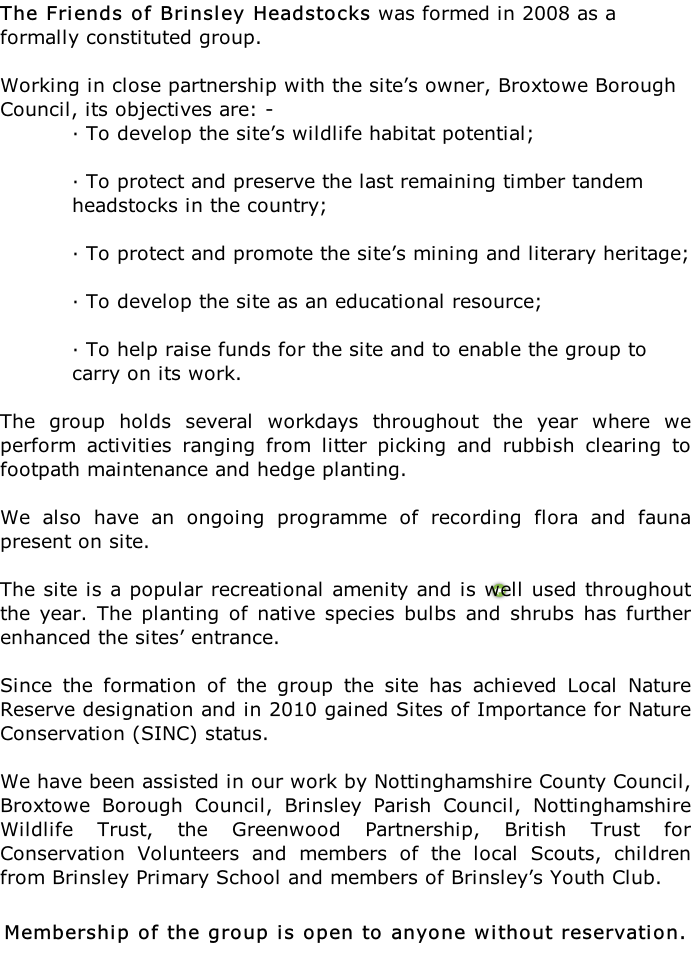
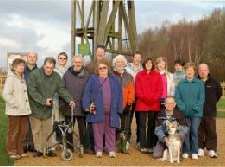

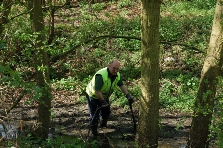
Clearing The Brook
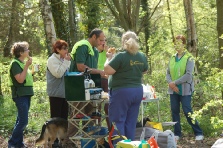
Time for Lunch
Why interfere?
We are often asked about the Headstocks site - “Why don’t you just leave it to nature?”
Unfortunately, if we did this, we would have a site in which invasive species took over, and we would lose the variety of plants and trees that we now have and also the different habitats. At the moment we have open grassland, wildflower meadow, woodland, woodland edge, hedges.- Areas for plants, insects, animals and humans.
The old spoil tip (not a natural feature!) behind Brinsley Headstocks has mainly Hawthorn and Oaks growing on it, providing homes for insects (good for pollinating crops, and eating if you are a bird). There are many small Maple seedlings growing amongst them, which if left would take over. This would create a monoculture leaving us with fewer types of trees, insects, birds and ground cover plants.
Some of the Crack Willow trees along the Brinsley Brook need to be coppiced (cut off near the ground) or pollarded (cut off at 5or 6 feet) to make them safer. These are traditional methods of managing trees, and they will grow again from where they have been cut. In the mean-time, this will open spaces to the light, encouraging wildflowers to grow, many of whose seeds will have been in the ground for decades, waiting for the right conditions. We may be surprised at what comes up! Older people from the village say how many wildflowers there were when they were children – it would be nice to see some of those flowers again.
The Hawthorns along the old Mineral Railway were originally hedges. These have grown old and leggy, and some are dying off. The traditional method of caring for hedges was “laying”, and this is being used to regenerate and thicken them. It is being done gradually, in sections, to give variation in the hedges; so there will be bits that have been freshly done and can look bare, followed by sections that are thickening up with new growth, and older parts which look more like a row of trees. This is giving the area a variety of habitats for birds and small mammals to nest and hide in. It also opens up views for the rest of us to enjoy.
The Friends of Brinsley Headstocks, with Broxtowe Borough Council and with advice from nature conservancy groups are working to help keep the area of value to humans, wildlife and plants: and to enhance our historic heritage.
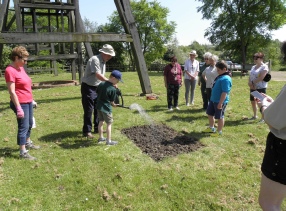
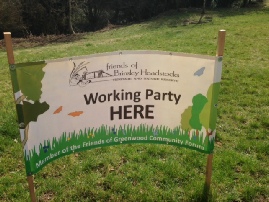
Friends - the History
DIARY OF A WORKING PARTY VOLUNTEER
BY Colin Barson
Eight o’clock Sunday morning. Headstocks working party at 10. Better have breakfast as no facilities on site. Better take secateurs, loppers, pruning saw, spade and fork. Musn’t forget gloves, safety glasses, bottle of water and high visibility waistcoat. Right, it’s half nine, fill the water bottle, load the tools in the boot, lace up the boots and away we go. Arrive at 10 and the gate from the car park is already open. Drive carefully up the mineral line and park the car at the end of long meadow with the others. Find someone who has the work programme for today.
Looks as if we have the usual crew here, that’s Ken, our Chairman, Steph, our Secretary, hopefully accompanied by her new dog, Peppa, and five or six other members. Some of the team are off with grabbers and plastic bags to do the always necessary job – litter picking. It’s amazing how much they collect each working party, whatever happened to “Take your litter home with you”? An aspect of discarded litter that is probably never considered is the danger to wildlife. It’s not unknown for small mammals to die with pieces of paper and foil wrapping lodged in their throats, or with their heads wedged in the neck of a plastic bottle. Insects will climb into a bottle to reach the inviting, sugary remnants of liquid in the bottom and then can’t climb the slope, formed by the tapered neck when the bottle is lying on its side, to get out.
The offensive part of the job is the amount of pet’s faeces that owners collect but can’t be bothered to carry it to one of our two dog waste bins or dispose of at home. Every time we litter pick there are many instances of dog owners discarding the bags irresponsibly.
Litter picking ensures that Members cover the whole of the site, visually inspecting all of the less accessible places that can easily get forgotten. The team does a great job of reporting on the condition of the site so that we can plan the repair works. Those that we can carry out are either done immediately or put on the action list for a future working party.
Litter picking is a rewarding task, particularly when a member of the public remarks “You’re doing a great job. The site looks super.”
The ponds on Headstocks site are all reasonably stagnant, so weed tends to grow quickly to cover the surface. One job we need to tackle regularly is the removal of this weed before it chokes much of the
pond and its aquatic life. We have tried many tools and found them all ineffective until one member saw details of a crome, which is a long handled cross between a fork and a rake. These collect the surface weed and bring it to the bank, where it can be left at the side of the pond. The weed teems with aquatic life, which hot foots it back into the water. I wonder how many times a particular, aquatic insect has been forcibly removed from his home and moved back to the pond to make another. The dipping pond is fed by Brinsley Brook, water level permitting and both pond and brook need to be free of choking vegetation.
As this pond is the largest on site clearing it involves one member donning waders and carefully getting in to move the weed to where another can reach it with a crome and drag it above the waterline. If we didn’t do this maintenance the line of the brook would change, and experience tells us that it would stop feeding the dipping pond.
One equally important job is clearing weeds out of the Dell. That’s the area which houses the memorial bench to our past chair, Wlady Wilhardt. We have planted Hazel trees in there intending to create a woodland habitat. As the Hazels grow their foliage will prevent light reaching the ground and the majority of plants will die due to lack of light. We can then coppice the Hazels on the basis of a small group each year to produce woodland glades of dappled shade where we can set woodland specialists such as bluebells and wood anemones to thrive. In the meantime, nature abhors any patch of open ground that can receive rain and light and colonises it with gusto. The Dell becomes infested with tough, energetic plants that grow almost as fast as we attempt remove them. We try and keep them under some sort of control. This has to be done without resorting to the use of chemicals as one aspect of our status as a Green Flag winning nature reserve is that we are restricted to the use of natural remedies.
Well, it’s almost 2pm, the end of our session, but there is time to view the hedge that some of us helped to lay at the top end of the Headstocks Meadow. The Friends group is a member of the Friends of Greenwood Community Forum, as is our Parish Council. In 2017 the Forum was awarded a Lottery grant to finance several activities, including training. One skill that was requested by several groups was Hedge Laying, a traditional skill which turns a hedgerow into a managed hedge. Three of us took advantage of the training, which took place on the Headstocks site. Not only did we gain another skill in the Friends Group, but the site also benefitted by having a scrubby hedgerow and wire fence transformed into a much better looking and manageable, laid hedge; and it is still an effective barrier. It’s growing nicely, in fact it could do with a trim. Must remember to bring loppers and shears down next time and make it look tidy.
Just time to see how the poppies that the Beavers planted are coming along. We’ve had virtually no rain since the seeds were scattered in 2018. I know Andy watered them in when we finished sowing but it’s been awful dry since Well look at that. Despite them succumbing to a dry 2018 and us assuming that they were dead, it looks as if they intend to make a showing for 2019. Isn’t nature wonderful?
Time to go home. I’m dying for a cup of tea, and can’t wait to get these boots off, See you at the next workday. Bye for now
